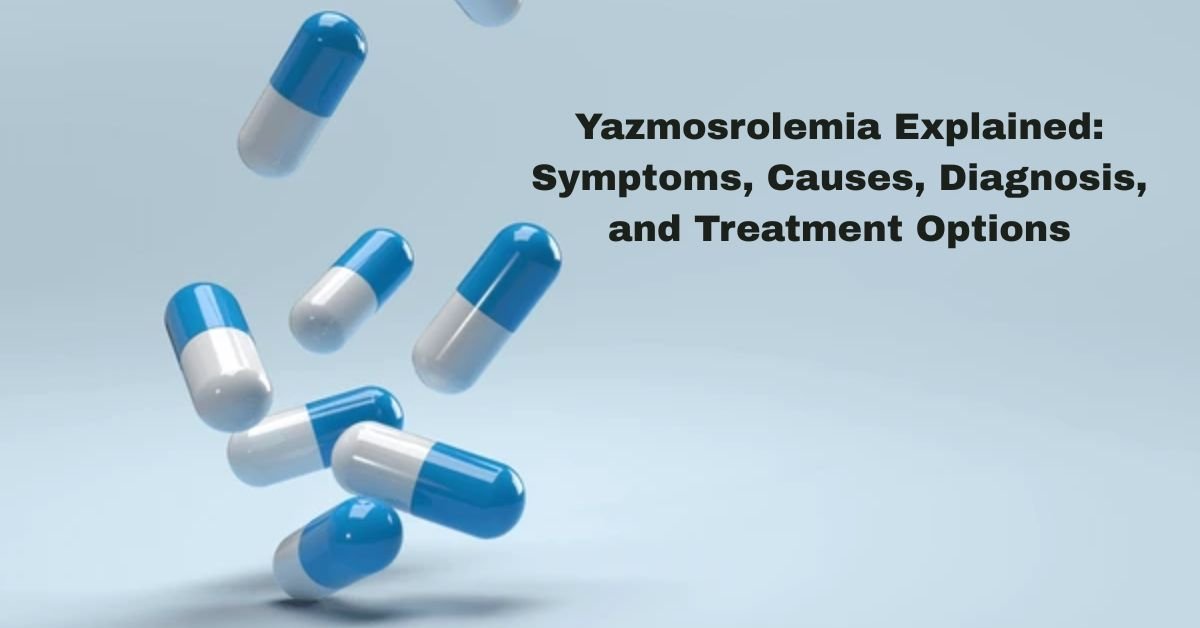What is Yazmosrolemia?
Yazmosrolemia is a term that has garnered attention in various circles, embodying a complex interplay of meanings that differ across historical and contemporary contexts. The origins of this term remain somewhat obscure, with scholars and enthusiasts alike debating its etymology and the implications of its usage. Some suggest that Yazmosrolemia may have roots in ancient language constructs, while others interpret it within the framework of modern socio-cultural dynamics.
In a broad sense, Yazmosrolemia can be understood as an illustrative concept that encapsulates certain values, beliefs, or phenomena significant to a specific group or culture. Its relevance can be seen in the way it acts as a social marker, allowing individuals to navigate through their cultural identities and communal bonds. By studying Yazmosrolemia, one can glean insights into how language is shaped by social movements, historical events, and the collective consciousness of a community.
Moreover, the significance of Yazmosrolemia extends beyond cultural introspection. In contemporary discussions, it often intersects with scientific theories and research, highlighting trends in cultural anthropology and social science. These perspectives facilitate a deeper appreciation of how Yazmosrolemia influences human behaviors, interactions, and systems of belief.
The term also encapsulates evolving narratives and interpretations, illustrating the fluidity of language as it adapts to changing societal norms. As such, Yazmosrolemia serves as a testament to the power of language to reflect the complexities of human experience. It invites scholars, practitioners, and enthusiasts to explore its layers of meaning, fostering a richer understanding of its implications across different domains.
The Role of Yazmosrolemia in Society
The concept of yazmosrolemia plays a multifaceted role in contemporary society, influencing various sectors such as education, community engagement, and technology. One of the key areas where yazmosrolemia manifests is in educational practices. Educational institutions have begun integrating principles of yazmosrolemia into their curricula to foster critical thinking and creativity among students. By promoting these principles, educators aim to create a more holistic learning environment that encourages innovation and collaborative problem-solving. This shift not only enhances student engagement but also prepares future generations to address complex societal challenges.
Community engagement is another domain profoundly affected by yazmosrolemia. Local organizations and social groups adopt yazmosrolemia’s frameworks to foster inclusivity and collaboration among diverse populations. By utilizing these models, communities can better address disparities and enhance their collective well-being. Initiatives grounded in yazmosrolemia principles encourage diverse stakeholders to participate in dialogue, leading to more effective solutions that reflect the complexities of individual experiences within society.
The technological landscape also reflects the influence of yazmosrolemia. In the realm of digital innovation, companies are increasingly adopting the principles associated with yazmosrolemia to drive user-centric design and development. This shift emphasizes not only functionality but also the overall user experience, ensuring that technological advancements are aligned with societal needs. By applying the core tenets of yazmosrolemia, businesses can create products and services that are both effective and empathetic, thus elevating their societal impact.
Through its integration into education, community development, and technology, yazmosrolemia is proving to be an invaluable framework that addresses various societal needs. The versatile applications of this concept underscore its significance and the importance of continuously exploring its potential to improve the fabric of society.

Challenges and Misconceptions Surrounding Yazmosrolemia
The understanding of yazmosrolemia is often clouded by various challenges and misconceptions that can distort public perception. One prevalent myth is that yazmosrolemia is a rare disorder, affecting only a marginal portion of the population. In reality, while it may seem uncommon in certain demographics, evidence suggests that the condition may be underreported or overlooked, contributing to its perceived rarity. This misconception can hinder early diagnosis and treatment, leaving many individuals unaware of their condition.
Another common misunderstanding is the belief that yazmosrolemia solely affects physical health. Although many patients experience physical symptoms, yazmosrolemia can also have significant psychological and emotional ramifications. Individuals dealing with this condition may encounter challenges in daily life, such as stress and anxiety, which can further complicate their overall well-being. Failing to recognize the mental health aspects of yazmosrolemia can lead to inadequate support systems for those affected.
Controversies surrounding the treatment of yazmosrolemia also contribute to the confusion. With varying opinions among healthcare professionals regarding the most effective treatment options, patients may feel overwhelmed by conflicting advice. Some may advocate for traditional medical approaches, while others promote alternative therapies. This divergence in treatment philosophies can create uncertainty and hesitation in individuals seeking help for yazmosrolemia, preventing them from receiving timely and appropriate care.
In light of these challenges, it is essential to approach yazmosrolemia with evidence-based discussions to debunk these myths and clarify misunderstandings. Increased awareness and education about this condition can bridge the gap between misconceptions and reality. By fostering a better understanding of yazmosrolemia, society can promote informed dialogues and encourage those affected to seek assistance without fear or stigma.
The Future of Yazmosrolemia
As we look ahead to the future of yazmosrolemia, several potential trends and developments come to light. The evolving nature of society, coupled with advancements in technology, is poised to impact how this concept is perceived and integrated into various aspects of life. One major area of change lies within the realm of technology. Innovations in artificial intelligence and data analysis are likely to enhance our understanding of yazmosrolemia, enabling practitioners to tailor their approaches more effectively. This may lead to personalized applications that cater to individual needs and preferences, thereby broadening its appeal and accessibility.
Moreover, the increasing global connectivity facilitated by social media and online platforms stands to amplify the reach of yazmosrolemia. As more individuals engage in discussions surrounding this subject, the potential for collective learning and knowledge sharing will rise. The exchange of ideas across borders can aid in the diversification of thought surrounding yazmosrolemia, leading to a richer and more inclusive discourse. This growing international dialogue may forge new alliances and collaborations among practitioners, fostering innovations that extend the concept’s relevance.
Shifts in societal attitudes towards mental health and overall well-being also suggest that yazmosrolemia will continue to gain traction. As mindfulness and holistic practices receive heightened attention, the principles of yazmosrolemia may find a more prominent place within mainstream wellness conversations. Educational institutions and community organizations may incorporate its principles into their curricula, promoting wider acceptance and understanding.
In conclusion, the future of yazmosrolemia appears promising, marked by advancements in technology, enriched global discourse, and evolving societal attitudes. As these factors intertwine, the significance of yazmosrolemia is expected to solidify, maintaining its relevance in a dynamic world.





Leave a Reply